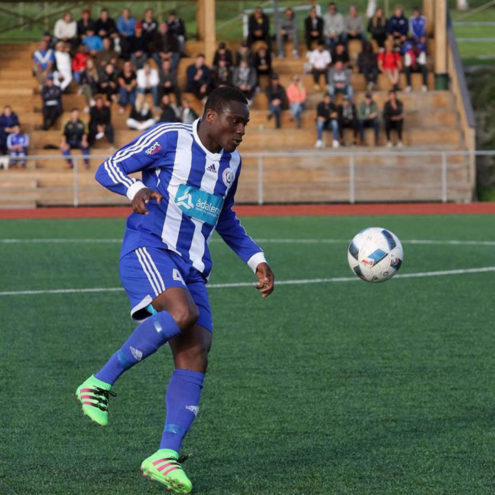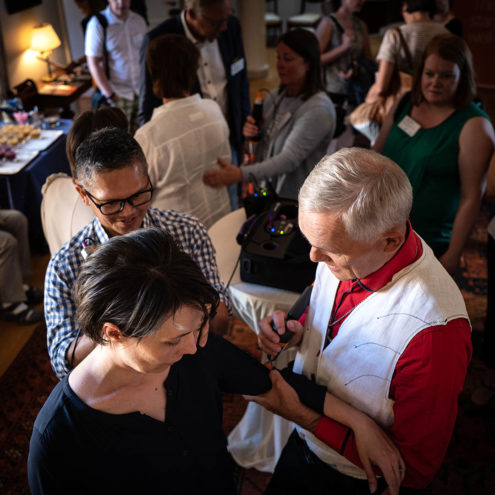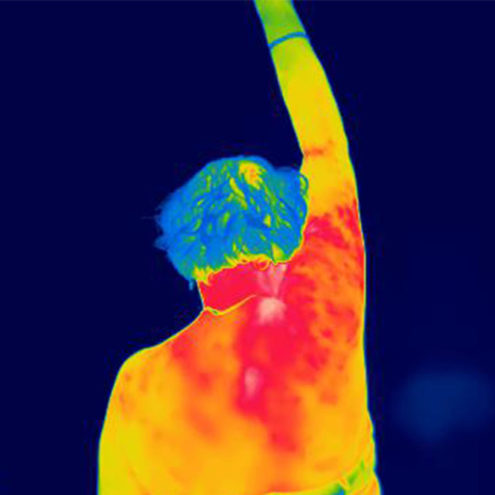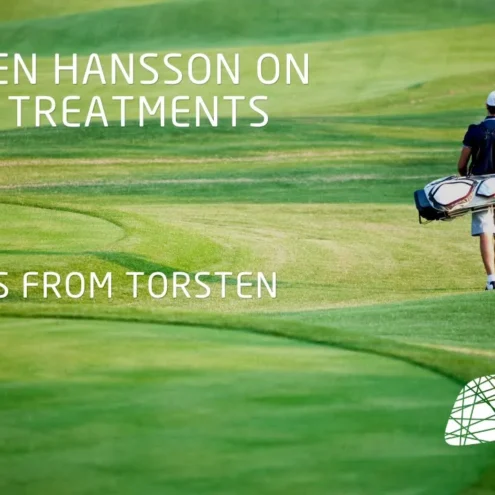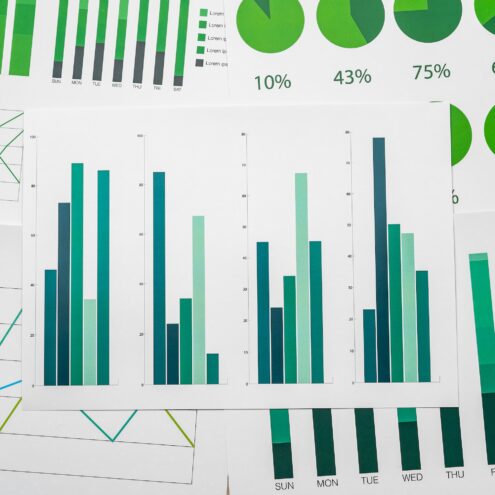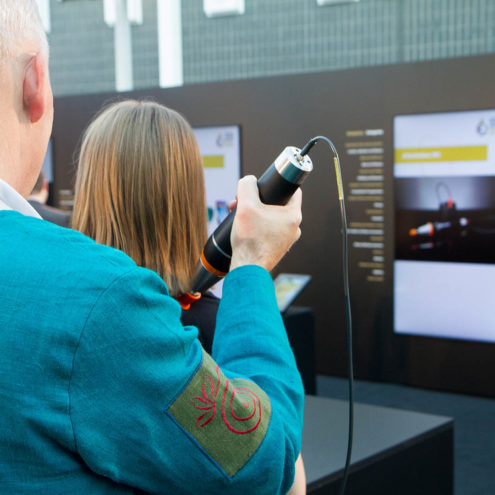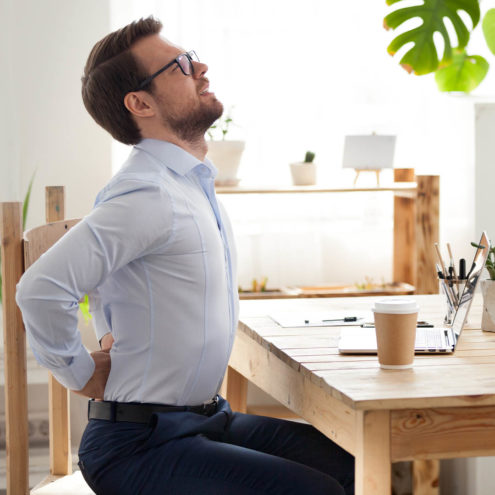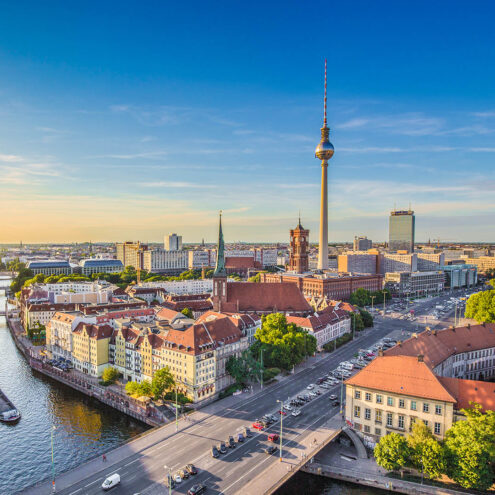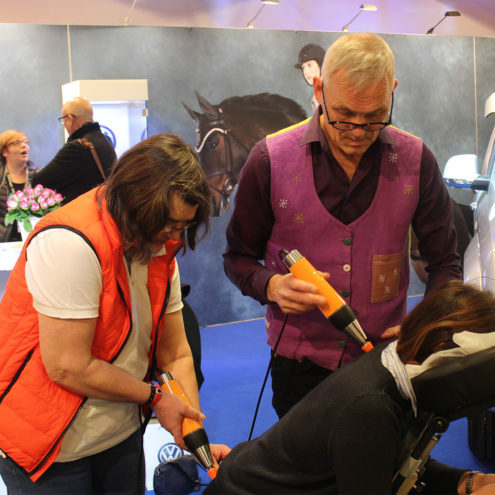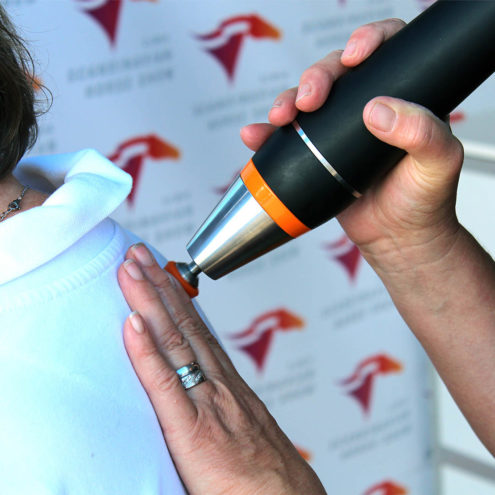Pain in the groin
The groin is defined as the area that sits between our abdomen and front inner thigh. This area is soft and looks like a fold between our thigh and pubic bone. You could say that the groin is the border area of the upper and lower body. Many muscles pass through the groin and work together to stabilize our legs, abdomen and pelvis. Hard sport is something that places very high demands on these muscles. These muscles need to be strong but also elastic to cope with the forces they are subjected to.
Common problems with the groin
Groin problems are often the result of muscles that have become overworked. Most commonly, the hip flexors and adductors (muscles on the inner thigh that bring the leg in towards the body) play a major role. The iliolumbar ligament, which sits between the sacrum and lumbar spine, can become overstretched and refer pain down to the groin. The pain can also come from the hip joint itself. Pain in the groin is a common symptom of hip osteoarthritis (see separate article). An inguinal hernia (see separate article) can also cause pain in the groin. Being overweight also puts a lot of strain on the groin muscles.
Why do you get groin problems?
Uneven and repetitive postures can lead to stiff and weak muscles in the groin. Stiff and weak muscles create an imbalance in strength and mobility between the right and left sides of the body. If the muscles are not working optimally, they can be overworked more easily and cause pain and discomfort in the groin.
A forward leaning posture for a prolonged period of time such as downhill skiing, horse jumping, deadlifts and squats are examples of activities that put a lot of strain on the groin. It requires strong muscles to flex the hip, extend the knees and stabilize the pelvis.
Sitting for long periods results in short and tight groins as the hip flexors and adductors become short and stiff. The large gluteus maximus muscle becomes weakened.
What is pain in the groin a symptom of?
Pain in the groin can be a symptom of an inguinal hernia (see separate article on inguinal hernia). Hip osteoarthritis can also cause pain in the groin area (see separate article). However, groin pain is most common in athletes, where the muscles around the groin, such as the hip flexors, adductors and abdominal muscles, are under a lot of strain. This leads to overuse and increases the risk of injury such as strains and muscle tears.
There are also many lymph nodes in the groin that can become enlarged and cause pain. In most cases, sudden swelling of the lymph nodes in the groin is not dangerous, but it should be borne in mind that it may be a sign of more serious underlying diseases
Being overweight and pregnant with a large belly puts more strain on the muscles around the groin.
Pain in the groin during pregnancy
During pregnancy, the body’s hormone production undergoes a major change. High levels of oestrogen cause major changes in the composition of the fascia. The production of type I collagen decreases and more type III is produced instead. Fascia structures such as ligaments, joints and tendons become softer and more mobile to eventually facilitate labor. A softer fascia puts extra strain on the muscles around the groin and makes them work even harder to stabilize. This can cause pain and a feeling of pressure in the groin area. At the same time, a fetus can also put more pressure on the groin and cause a female inguinal hernia.
A widening pelvis with more mobile joints can cause pain in some women. This type of pelvic pain is known as joint loosening. It is not uncommon, but it can be very distressing, causing severe pain and even more limited mobility. It is most common in mid-pregnancy but can occur earlier or later than that. The pain can feel like a radiating or stabbing sensation in the groin.
Try to relieve the strain on your back when sitting or lying down. Also, be sure to keep your back and pelvis level when standing. Wear comfortable shoes that fit your feet. Avoid heavy lifting. If you must lift, it is important to bend your knees to reduce the strain on your hip flexors. Light strength training for the abdominal and back muscles and water exercises can strengthen the muscles.
When and where should I seek treatment for groin problems?
If you are not sure where your groin pain might be coming from, it is important to consult a doctor to find out the cause. Problems with internal organs such as the kidneys, urinary tract, testicles or ovaries can cause pain in the groin area and can be very serious. If your groin pain is due to overuse of muscles and fascia structures or to imbalances and misalignments, FasciaClinics can help you. It is good to seek help as soon as possible before compensatory sequelae occur and make the injury worse.
How are groin pain and groin problems treated?
Fascia clinics analyze the whole body to see where compensations and imbalances exist and how they have spread. If there is a primary misalignment in the body, imbalances can spread further in the body so that muscles and tendons are more easily overworked. Fascia treatment for groin pain involves balancing the body to even out the load on the pelvis and reduce the risk of overuse. The whole pelvis is corrected and the hip flexors are treated to soften and relax them. Relief and balancing of the spine and legs is also done. The treatment is done both manually and mechanically with gentle vibrations. The vibration removes congestion in the fascia and starts its flow so that the cells can absorb and release substances more easily. This improves the body’s own ability to heal itself.
Groin pain – What can I do myself?
You can do relaxation exercises with deep breathing to relax your body. Work with the diaphragm to stimulate the vagus nerve and flow in the body. Work on strengthening the hip flexors and relaxing them.

Exercises for groin pain?
Lie on your back with your legs on a stool, your hips and knees at a 90° angle, arms out to the sides, palms facing the ceiling. Relax and breathe deeply for at least 10 minutes.
Stand against a wall and bend your knee and hip joint at 90 degrees. Try to sit for at least two minutes. The exercise should activate the muscles of the lumbar spine.
Hip lift. Lie on your back with knees bent and feet on the ground. Tighten your buttocks and lift your pelvis up so that you are standing in an arc. Try to relax one buttock while trying to tense the other. Alternate between tensing the right and left buttock 10-15 times. Then slowly come back to the original position. Variation: Lift your pelvis with only one leg. Tense the buttock for five seconds and come down slowly, switching legs. Repeat the exercise. The hip lift strengthens the gluteal muscles and stabilizes the pelvis.
Stretching exercises – groin
Stretch hip flexors.Take a step forward with any leg and keep the knee of the other leg on the ground. Keep your back upright. Place your hands on your hips and gently push your hips forward until you feel a stretch. Avoid falling forward with your back. Hold the stretch for at least 60 seconds. Switch legs and repeat. Variation: Step forward and place your foot on a chair, stool or similar. Keep your back straight. Gently push your hips forward until you feel a stretch. Hold for at least 60 seconds. Switch legs and repeat.
Stretch the adductors / inner thighs. Kneel as wide as possible. Have something soft under your knees. Bend forward and place your elbows on the ground. Try to bring your knees outwards. Hold the stretch for at least 60 seconds. Variation: Lie on your back and put both heels of your feet together. Pull your feet in towards your body as much as you can and press your butt down towards the floor at the same time. Hold the stretch for at least 60 seconds.
Groin – frequently asked questions
What causes pain in the groin?
Groin pain is usually caused by stiff and overworked muscles. Inguinal hernias, swollen lymph nodes or internal organ involvement can cause groin pain and can have serious consequences. If you are unsure of the origin of the pain, seek medical attention immediately.
Can I exercise if I have pain in the groin?
If the cause of the pain is muscle stiffness, you can exercise. However, there is an increased risk of injury when exercising with stiff muscles. A stiff muscle often has less mobility and strength, which can cause other muscles to engage and compensate. These muscles may not be strong or mobile enough to perform the movement. If a muscle is used ‘the wrong way’, the risk of overuse and muscle tears is high. Stretching before exercising can be a good idea to improve groin mobility and reduce the risk of injury.
Is it dangerous to have pain in the groin?
If the cause of the pain is muscular, it is not dangerous. If the pain is due to a serious underlying disease that is not investigated and treated, there can be serious consequences.
 Search
Search


